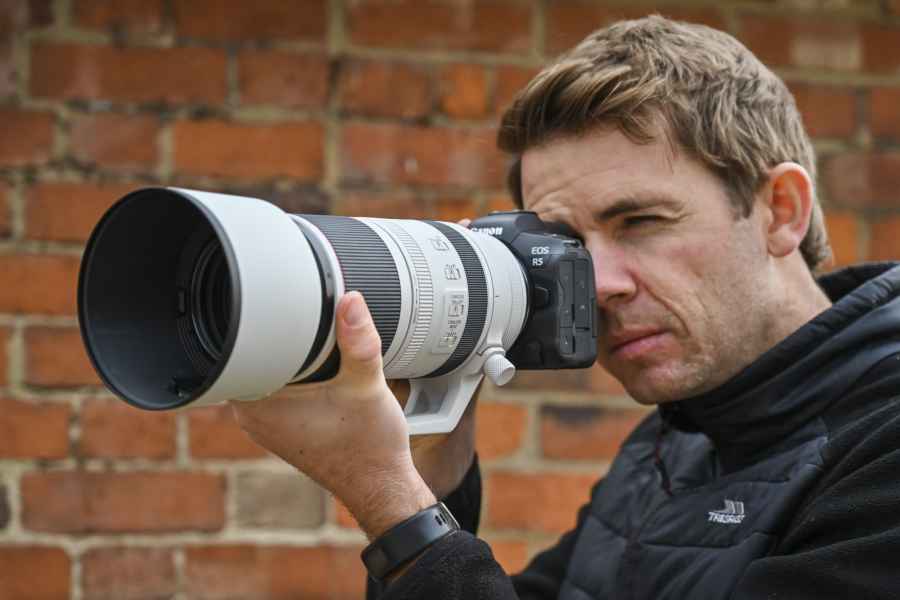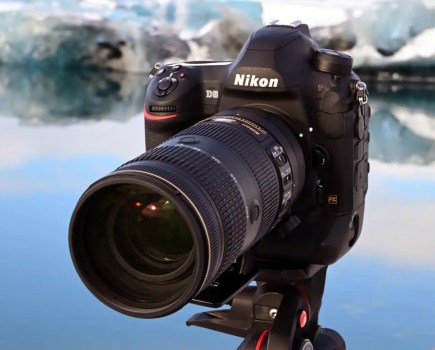Many photographers take up the hobby out of a passion for nature, so in partnership with Canon, here is a comprehensive guide to some of the best Canon RF lenses for wildlife photography.
Most wildlife subjects are wary of humans and like to stay a safe distance away. This means that you’re going to spend a lot of time shooting with telephoto lenses to photograph faraway animals and birds. As with any camera brand, the best Canon RF lenses for wildlife photography can have price tags that make them suitable only for professional filmmakers and photographers. However, there are cheaper alternatives too, and whatever your budget, we think you’ll find the perfect lens in this guide.
So first a word about focal length. This is tied to magnification, and the smaller and more distant your subject, the more magnification you’ll need. A 70-200mm or 70-300mm lens might be fine for a lot of sports photography, but for wildlife you’ll probably need a 400mm lens or longer.
This is where things can get expensive, but Canon does include a perfectly affordable telephoto zoom in its RF lens range, not to mention a couple of aces – its 600mm and 800mm f/11 telephoto primes which initially attracted some notoriety for their small maximum aperture but quickly proved the doubters wrong with their excellent optical performance, relatively low cost and everyday practicality.
We’ve also included a macro lens for extreme close-ups and, at a pinch, some short telephoto shots (ideal in zoos and animal enclosures). Not all wildlife is mammalian – if your interest is invertebrates, insects and other smaller subjects, you don’t need a lets that can bring faraway subjects closer, but one that can get you closer to subjects right under your nose.
So with all that in mind, see below for our guide to the best Canon RF lenses for wildlife photography. Don’t miss our complete guides to wildlife photography, how to get better images by studying animal behaviour, and how to capture images of fast-moving birds and animals
Here’s the quick list of all our picks of the Canon RF lenses for wildlife photography:
- Canon RF 100-400mm F5.6-8 IS USM – check best price
- Canon RF 100-500mm F4.5-7.1L IS USM – check best price
- Canon RF 600mm F11 IS STM – check best price
- Canon RF 800mm F11 IS STM– check best price
- Canon RF 100mm F2.8L Macro IS USM – check best price
- Canon RF 600mm F4L IS USM – check best price
- Canon RF 800mm F5.6L IS USM– check best price
- Canon RF 1200mm F8L IS USM – check best price
1. Canon RF 100-400mm F5.6-8 IS USM
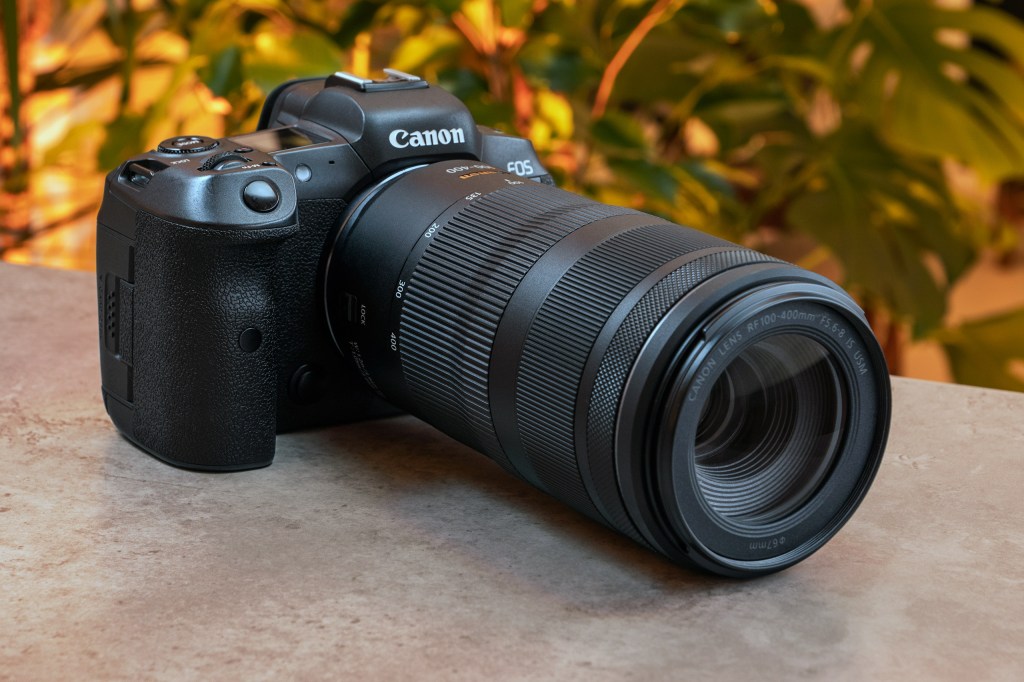
Canon RF 100-400mm F5.6-8 IS USM. Image credit: Amateur Photographer
At a glance
- Type: Telephoto zoom
- Format: Full frame
- Weight: 635g
- Price: $599 / £699
This is the affordable telephoto zoom in the Canon RF lens line-up and it’s an excellent buy for anyone who wants to get into wildlife photography but can’t afford Canon’s top L-series lenses. There are a few compromises but not many. The body is plastic rather than metal – but that’s actually a good thing on a cold day! – and there’s no tripod mounting ring. But then at a weight of just 635g, it’s no hardship to carry this lens around on your camera and put it to your eye to get your shots. It also has a very effective optical stabiliser to keep your subjects steady in the frame, and this will be especially useful if you have a Canon EOS RP or EOS R with no in-body stabilisation of its own.
• Read our full Canon RF 100-400mm F5.6-8 IS USM review
2. Canon RF 100-500mm F4.5-7.1L IS USM

Canon RF 100-500mm F4.5-7.1 L IS USM: Image credit: Amateur Photographer
At a glance
- Type: Telephoto zoom
- Format: Full frame
- Weight: 1370g
- Price: $2,899 / £2,979
The Canon RF 100-500mm F4.5-7.1L IS USM is for more serious users with a bigger budget. Its 100-500mm focal range gives it more reach and magnification than Canon’s cheaper RF 100-400mm F5.6-8 IS USM lens, and it has a faster maximum aperture across the zoom range by around half an f-stop.
This lens stays impressively sharp in the centre of the frame even at the maximum zoom setting, which is where many long-range telephoto zooms can struggle. Canon’s L-series lenses come at a price, of course, but the 5x zoom range, optical stabilisation and professional build quality of this one make the outlay worthwhile.
• Read our full Canon RF 100-500mm F4.5-7.1L IS USM review
3. Canon RF 600mm F11 IS STM
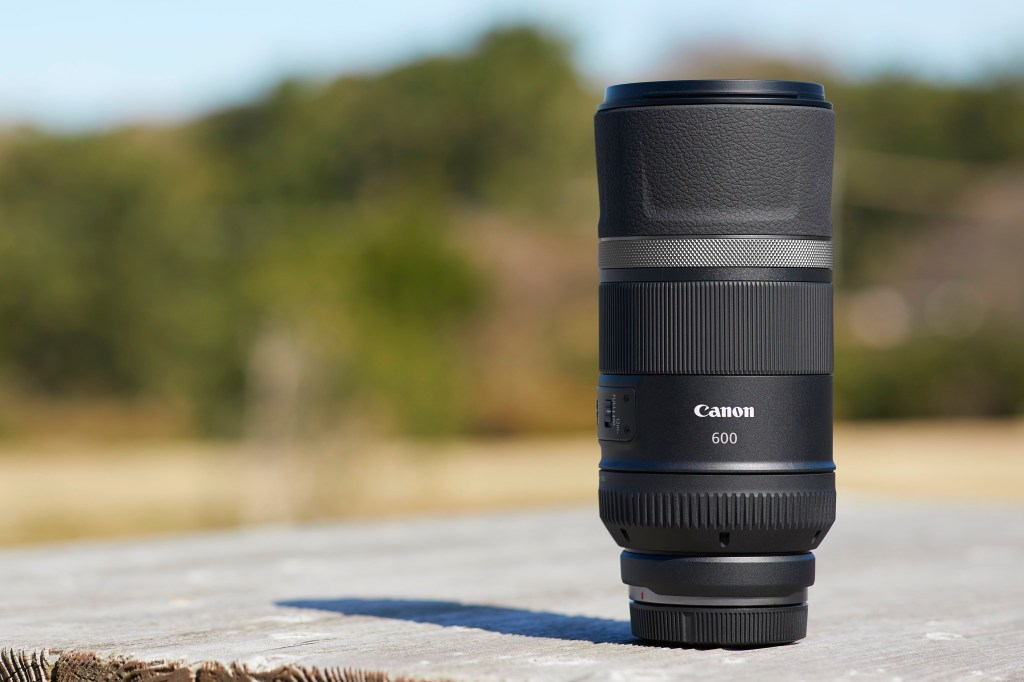
Canon RF 600mm F11 IS STM. Image credit: Canon
At a glance
- Type: Telephoto prime
- Format: Full frame
- Weight: 930g
- Price: $799 / £829
Canon surprised everyone when it introduced a pair of affordable super-telephoto prime lenses with a maximum aperture – or to be more precise a fixed aperture – of just f/11. This is around two f-stops slower than typical super-telephoto prime lenses and, you might have thought, would restrict the shutter speeds and ISO settings you can use. In practice, the RF 600mm F11 IS STM, the smaller of these two primes, is perfectly practical to use in most conditions.
You may need to ramp up the ISO just a little if the light levels fall, but modern EOS R camera cope with this perfectly well. Better still, the mirrorless design means you still get a bright viewfinder image and rear screen display, even from an f/11 lens. The optical performance is good, the built-in stabilization works well, and altogether this lens is a real bargain for wildlife photography fans.
4. Canon RF 800mm F11 IS STM
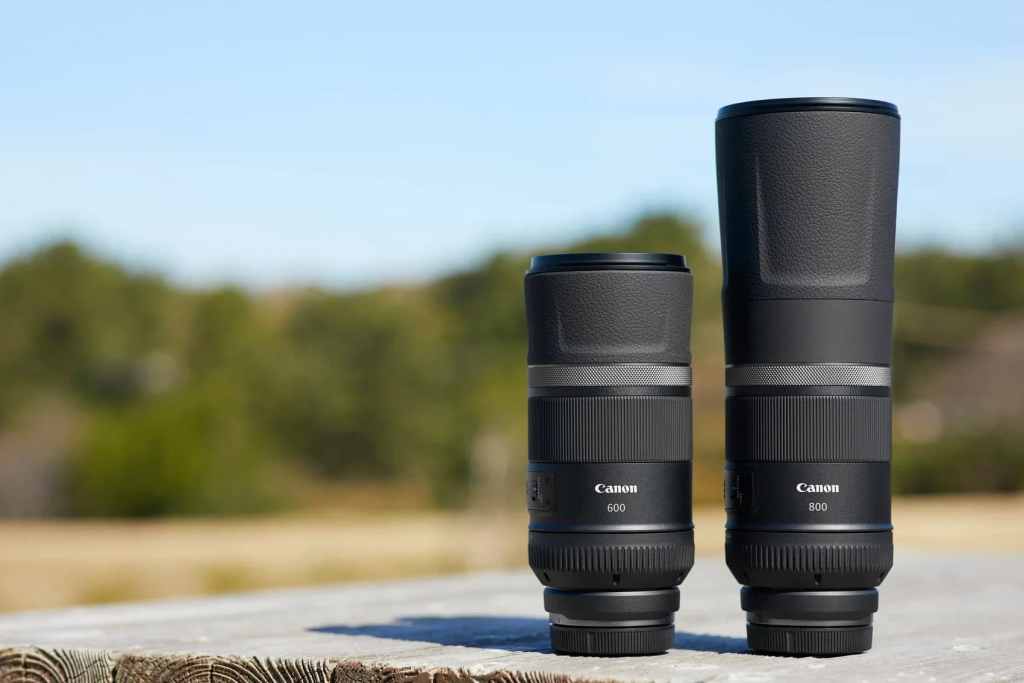
Canon RF 800mm F11 IS STM (right) next to the 600mm. Image credit: Canon
At a glance
- Type: Telephoto prime
- Format: Full frame
- Weight: 1260g
- Price: $999 / £1,099
Normally, an 800mm telephoto lens would costs thousands, but the RF 800mm F11 IS STM is a super-telephoto with a difference. Canon does make a regular 800mm f/5.6 super-telephoto with L-series optics and a price tag that only professionals could contemplate, but this amazing alternative falls within the scope of any keen amateur. The chief compromise is the f/11 maximum aperture, which means you will often need to increase the ISO setting to get fast shutter speeds.
And while it’s not as big as the professional f/5.6 L-series lens, this is still a pretty hefty lens to hold and carry around (though not compared to other 800mm telephotos). Having said that, the optical quality is good, the in-built stabilisation works well and Canon’s mirrorless viewing and autofocus systems are unfazed by the f/11 aperture. To be able to get an 800mm super-telephoto lens at this price is pretty extraordinary.
5. Canon RF 100mm F2.8L Macro IS USM

Canon RF 100mm F2.8L Macro IS USM. Image credit: Canon
At a glance
- Type: Macro prime
- Format: Full frame
- Weight: 685g
- Price: $1,199 / £1,479
Not all wildlife photography involves distant subjects at long range. If you’re interested in insects and smaller animals for macro shots, you need a lens that can focus closer rather than one designed for long distances. This Canon RF 100mm F2.8L Macro IS USM will do just that, with a maximum magnification that goes beyond the usual 1x life-size magnification used to define ‘macro’ shooting, to actually offer up to 1.4x magnification, which means you can fill the frame with a single insect. This lens also features in-built optical stabilisation to make handheld macro shots more successful – though focusing becomes so critical at ultra-short distances that a tripod could still prove useful.
• Read our full Canon RF 100mm F2.8L Macro IS USM review
6. Canon RF 600mm F4L IS USM
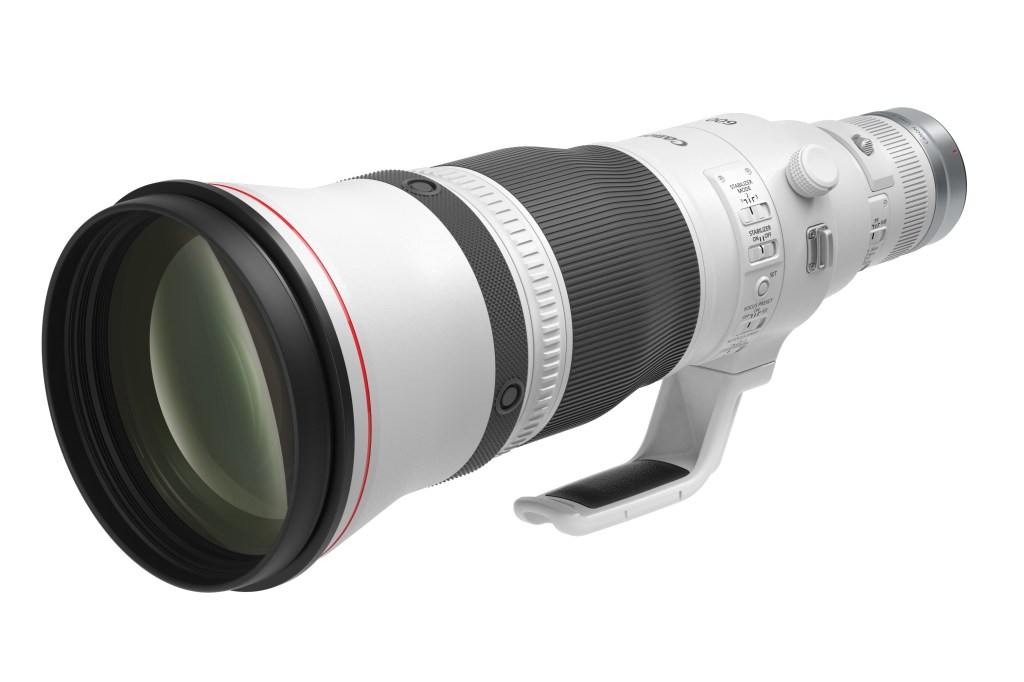
Canon RF 600mm F4L IS USM. Image credit: Canon
At a glance
- Type: Telephoto prime
- Format: Full frame
- Weight: 3090g
- Price: $12,999 / £14,179
We’ve included three professional Canon super-telephoto prime lenses in this guide, not necessarily as recommended buys for average users, but to offer some context for the rest of the lens range. Canon’s L-series telephoto primes are, like those from other camera makers, designed for professional wildlife (or sports) photographers who need the best possible image quality and can justify the cost and weight of these lenses.
The Canon RF 600mm F4L IS USM is not the shortest lens in this group (there is also a 400mm f/2.8), but it is perhaps a starting point for wildlife photographers. There is the far cheaper Canon RF 600mm F11 IS STM (above), of course, but this L-series lens boasts better optical quality, a much more rugged construction and, perhaps most significant, it has a maximum aperture three stops faster.
7. Canon RF 800mm F5.6L IS USM
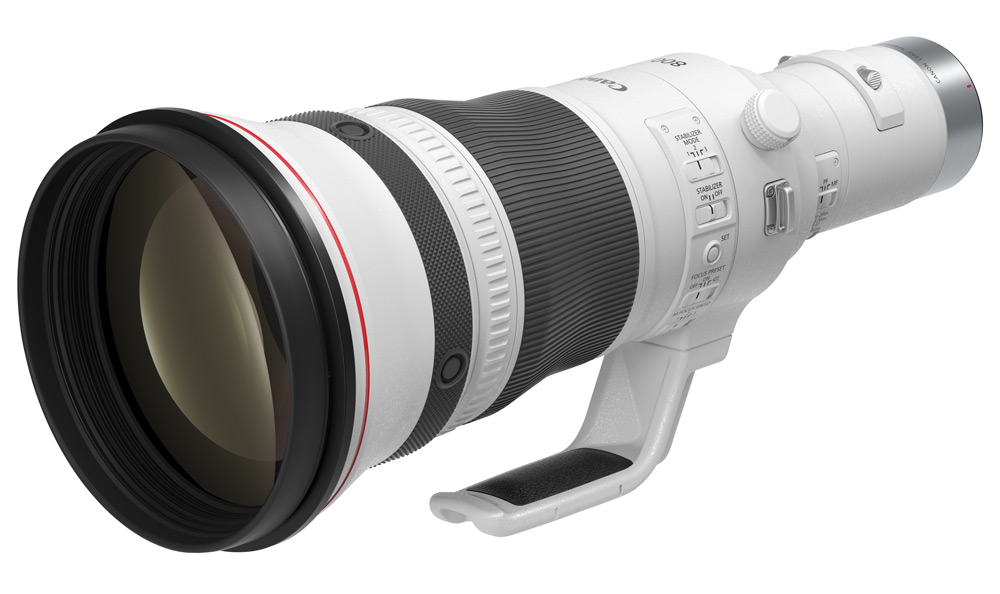
Canon RF 800mm F5.6L IS USM. Image credit: Canon
At a glance
- Type: Telephoto prime
- Format: Full frame
- Weight: 3140g
- Price: $16,999 / £19,099
When you go up in focal length with a super-telephoto lens, you invariable have to accept a reduction in the maximum aperture. But while the RF 800mm F5.6L IS USM has a maximum aperture one f-stop slower than its 600mm equivalent, it’s still two stops faster than the RF 800mm F11 IS STM ‘consumer’ lens.
With an all-up weight of over 3kg, this is a lens that could be used handheld at a pinch, but will be much more comfortable to operate on a tripod, once you’ve found the ideal location for watching your wildlife subjects. This lens offers 4.5 stops of stabilization, in combination with cameras that have IBIS systems, and uses Fluorite, ED and Super ED glass to combat aberrations.
8. Canon RF 1200mm F8L IS USM

Canon RF 1200mm F8L IS USM. Image credit: Canon
At a glance
- Type: Telephoto prime
- Format: Full frame
- Weight: 3340g
- Price: $19,999 / £22,449
This is the longest of Canon’s super-telephoto RF prime lenses. The 1200mm focal length offers the highest magnification of all, but comes with a maximum aperture of f/8, which could mean increasing the ISO setting to achieve sufficiently fast shutter speeds. The tripod mounting ring included with this and Canon’s other pro telephoto lenses makes tripod use straightforward – this lens is a bit of a beast for hand-holding – and the weatherproof design makes it suitable for all kinds of shooting conditions.
A fluorine coating on the outer elements repels water droplets. This is Canon’s longest lens, though you could get the same focal length and effective maximum aperture by using the RF 600mm F4L IS USM in combination with Canon’s 2x telephoto extender.
Further reading
Complete guide to wildlife photography
How to be an ethical wildlife photographer
The top 15 best wildlife photos
Low-light wildlife tips

